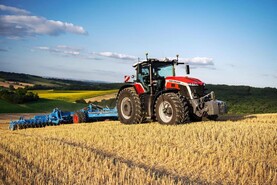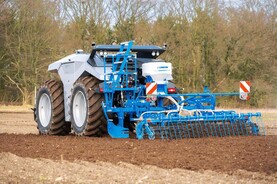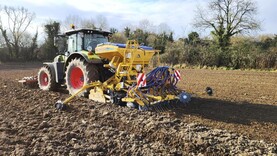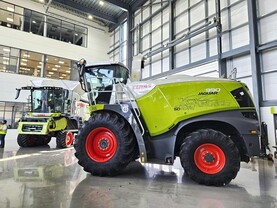Autonomous tractors and robots were all the rage at Agritechnica. Claas surprised everyone with its prototype autonomous Xerion 12.590 Terra Trac.
It was kitted out with three Lidar sensors and eight cameras to detect obstacles. It featured technology which allows the tractor to automatically follow prescribed tracks and monitor work processes.
In the future, Claas hopes to offer three steering options, namely driver assistance, co-pilot or auto-pilot.
Driver assistance will be the entry level option. An automatic steering system will aid the operator to drive straight at a constant speed across the field.
All the driver has to do is monitor the controls.
Co-pilot is the mid-level offering. This sees the addition of LiDAR, radar, cameras and AI. It allows the tractor to analyse its surroundings and drive itself. The farmer can use the tractor conventionally, or pre-plan and automate the fieldwork, meaning the driver is only a supervisor.
Through a portal, job information is all inputted.
Auto-pilot is the top-end option. With this, the driver can use the tractor as normal, or the work can be done completely autonomously. Once the key parameters have been set, the operator can leave the tractor.
The tractor is started through the Claas Connect app, where it indicates “work in progress” when working, and will display an expected finish time when the fieldwork will be completed.
Implements fitted with technology will be important for the success of autonomy.
Take the Amazone Cenius cultivator which was on display at Agritechnica, it features Amazone AutoTill technology for automated work. This monitors the working position, depth and roller speed, as well as share loss and clogging.
Data recorded by the cultivator is compared with tractor data, and will adapt operating speed when blockages are detected, etc.
Testing of the Xerion is taking place, but commercial availability is still some years away.
Current EU legislation around such vehicles is another factor holding back large-scale autonomy.






 This is a subscriber-only article
This is a subscriber-only article










SHARING OPTIONS: